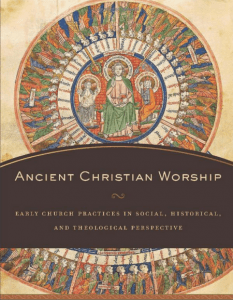 John, who got nicknamed “baptizer” either to distinguish him from other Yohanans or to signal the importance of his baptism, baptized and Jesus baptized — or he insisted on his associates baptizing (John 3:22-26; 4:1-2; Matthew 28:16-20). These two sorts of baptisms are not found in the Jewish world in quite the same way as among John and Jesus, for with them it was a singular and not a repeated event and by immersion (as to the right — my friend Kent baptizing DeeDee in the River Jordan). Lustrations were in the Jewish world repeated — at Qumran or in the local miqveh (see my A Light among the Gentiles for a discussion of baptisms and lustrations). Baptism was not repeatable.
John, who got nicknamed “baptizer” either to distinguish him from other Yohanans or to signal the importance of his baptism, baptized and Jesus baptized — or he insisted on his associates baptizing (John 3:22-26; 4:1-2; Matthew 28:16-20). These two sorts of baptisms are not found in the Jewish world in quite the same way as among John and Jesus, for with them it was a singular and not a repeated event and by immersion (as to the right — my friend Kent baptizing DeeDee in the River Jordan). Lustrations were in the Jewish world repeated — at Qumran or in the local miqveh (see my A Light among the Gentiles for a discussion of baptisms and lustrations). Baptism was not repeatable.
The early church carried on this practice — it was a baptismal movement. Converts were baptized; the unbaptized were not converts. Baptism marked the transition from world to church. Even if Paul can say in 1 Cor 1 that he can’t remember if he baptized any of them he is not minimizing this crucial transitional moment.
Do you think baptism is the act regardless of how it is done — immersion of an adult upon profession, infant as part of covenant? Does it matter?
Our Creed, in fact, says we believe in “one baptism for the forgiveness of sins.” The Baptistic types among us right this moment are a bit uncomfortable with connecting baptism and forgiveness, they relieve themselves for the moment by saying “Well, that’s the Creed, not the Bible.” But they are not relieved to learn John preached a “baptism of repentance for the forgiveness of sins,” they feel a bit relieved to learn John’s baptism is not enough in Acts 19:1-5, but the tension re-emerges because the apostles said “Repent and be baptized for the forgiveness of sins” in Acts 2:38. So from the very beginning baptism is connected both to repentance and to forgiveness. [By the way, the best book ever, ever on baptism is by Everett Ferguson, Baptism in the Early Church.]
Ron Heine, in Classical Christian Doctrine, says there is no evidence of infant baptism in the NT — I agree though I know the jailor and his household got baptized, and it perhaps had children, but there are no children mentioned — so we learn to say “we don’t know for sure.” But there is still the observation that no children get baptized in the NT.
He also says it was by immersion, and again the evidence is in his favor. What is most important in the NT is that it is being plunged into the life of Jesus himself — his life, death, burial and resurrection. Baptism is to be immersed into Jesus; his life becomes ours. No other explanation works. It’s the “in Christ” act — it’s the “into Christ” act. We move from world to Christ in baptism. Too many Baptist types today think nothing happens in baptism other than public declaration; irony to be known for a term (baptism) that means too little to be known for. Baptism in the NT was a colossal act.
In the Didache one had to be instructed first, mostly into the teachings of Jesus, and fast a bit and then one could be baptized. It was Trinitarian. It was to be in cold running water; if unavailable, warm water works; if no running water is available, it can be done in still water; if that’s not available, you can pour water on the head three times. Some nice flexibility here. It is largely the same with Justin Martyr, and by immersion is clear.
In the Apostolic Tradition developments are seen: it was done on Easter Sunday; three years catechumenate before; exorcisms are performed prior to baptism; the entire night prior is spent listening to Scripture; they disrobe and the order is small children, men and then women. The baptisand renounces Satan, etc, anointed with oil, baptized three times, another anointing and then re-clothe to celebrate Eucharist.
By the 3d Century infants are being baptized; Tertullian was not in favor but he knew others were performing baptism on infants. Cyprian defended infant baptism. By this time also one begins to see sprinkling as a kind of baptism.
Also Heine observes that more and more baptism was a “seal” after which the person was not to sin, leading many to postpone baptism (as with Constantine).
Baptism, designed to unite us with Christ, has become for many an inflexible rite that divides. The flexibility of the early church is admirable.











